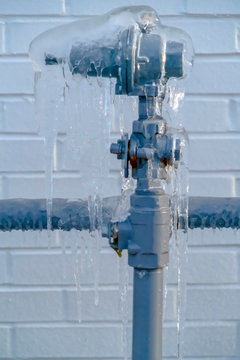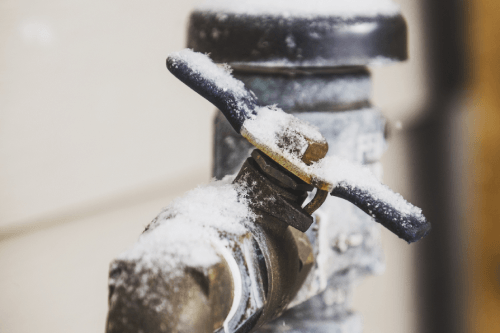The article author is making a number of good observations on the subject of How to prepare your home plumbing for winter weather as a whole in this great article down the page.

Winter can wreak havoc on your pipes, specifically by freezing pipes. Here's exactly how to prevent it from occurring and what to do if it does.
Intro
As temperature levels drop, the threat of frozen pipes increases, potentially bring about costly repairs and water damages. Recognizing just how to avoid icy pipelines is important for home owners in cool environments.
Avoidance Tips
Protecting prone pipelines
Wrap pipes in insulation sleeves or use heat tape to shield them from freezing temperature levels. Focus on pipes in unheated or external locations of the home.
Home heating strategies
Maintain indoor rooms properly heated, especially locations with plumbing. Open cupboard doors to allow cozy air to flow around pipelines under sinks.
Just how to determine icy pipelines
Try to find lowered water flow from taps, uncommon odors or sounds from pipelines, and visible frost on revealed pipes.
Long-Term Solutions
Structural changes
Think about rerouting pipelines away from exterior walls or unheated areas. Add extra insulation to attics, cellars, and crawl spaces.
Upgrading insulation
Invest in top notch insulation for pipelines, attic rooms, and wall surfaces. Correct insulation assists preserve constant temperature levels and decreases the danger of frozen pipes.
Safeguarding Outside Pipes
Garden hose pipes and exterior faucets
Disconnect and drain pipes yard pipes before winter. Set up frost-proof spigots or cover exterior faucets with shielded caps.
Recognizing Icy Pipelines
What triggers pipelines to freeze?
Pipelines ice up when revealed to temperature levels listed below 32 ° F (0 ° C) for expanded periods. As water inside the pipes freezes, it increases, taxing the pipe wall surfaces and possibly creating them to burst.
Threats and problems
Icy pipes can cause supply of water disruptions, residential property damage, and pricey fixings. Ruptured pipes can flood homes and create considerable structural damages.
Indications of Frozen Pipeline
Recognizing icy pipes early can stop them from rupturing.
What to Do If Your Pipes Freeze
Immediate activities to take
If you think icy pipes, maintain faucets open to soothe pressure as the ice thaws. Use a hairdryer or towels taken in warm water to thaw pipes gradually.
Verdict
Avoiding icy pipelines calls for proactive measures and quick feedbacks. By understanding the reasons, signs, and safety nets, house owners can shield their plumbing during winter.
5 Ways to Prevent Frozen Pipes
Drain Outdoor Faucets and Disconnect Hoses
First, close the shut-off valve that controls the flow of water in the pipe to your outdoor faucet. Then, head outside to disconnect and drain your hose and open the outdoor faucet to allow the water to completely drain out of the line. Turn off the faucet when done. Finally, head back to the shut-off valve and drain the remaining water inside the pipe into a bucket or container. Additionally, if you have a home irrigation system, you should consider hiring an expert to clear the system of water each year.
Insulate Pipes
One of the best and most cost-effective methods for preventing frozen water pipes is to wrap your pipes with insulation. This is especially important for areas in your home that aren’t exposed to heat, such as an attic. We suggest using foam sleeves, which can typically be found at your local hardware store.
Keep Heat Running at 65
Your pipes are located inside your walls, and the temperature there is much colder than the rest of the house. To prevent your pipes from freezing, The Insurance Information Institute suggests that you keep your home heated to at least 65 degrees, even when traveling. You may want to invest in smart devices that can keep an eye on the temperature in your home while you’re away.
Leave Water Dripping
Moving water — even a small trickle — can prevent ice from forming inside your pipes. When freezing temps are imminent, start a drip of water from all faucets that serve exposed pipes. Leaving a few faucets running will also help relieve pressure inside the pipes and help prevent a rupture if the water inside freezes.
Open Cupboard Doors
Warm your kitchen and bathroom pipes by opening cupboards and vanities. You should also leave your interior doors ajar to help warm air circulate evenly throughout your home.

We were made aware of that write-up on 6 Ways to Prevent Frozen Pipes through an associate on a different web page. Do you know somebody else who is occupied with the subject? Be sure share it. We love reading our article about How To Avoid Freezing Pipes.
Get Offer